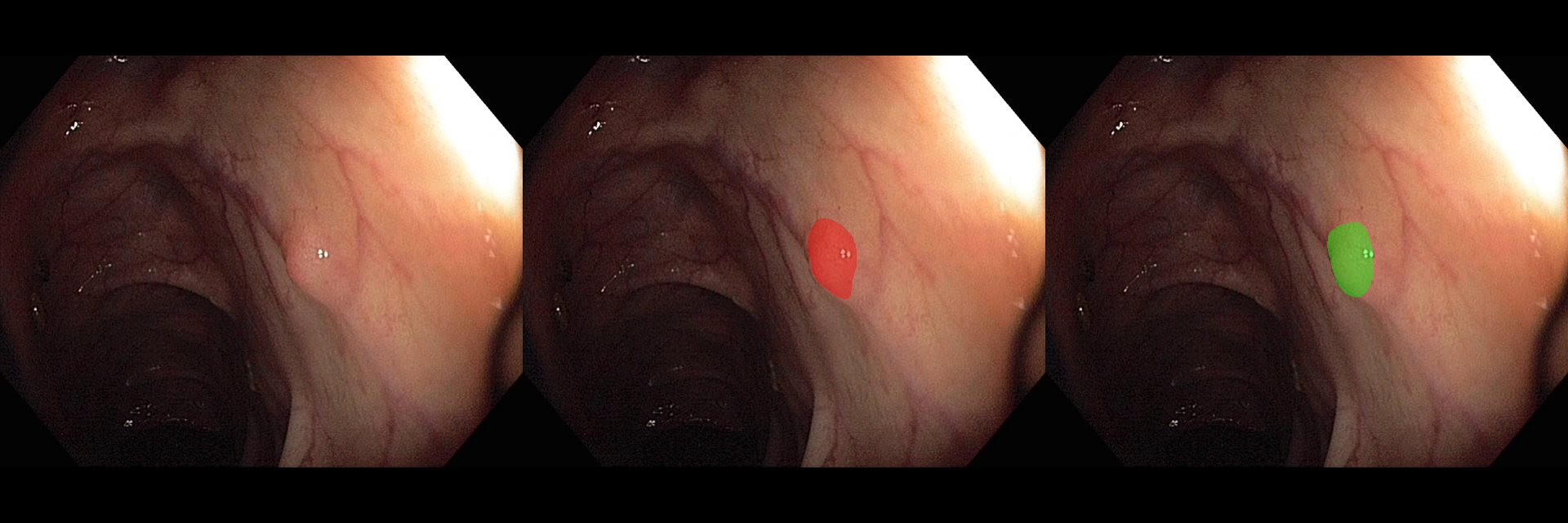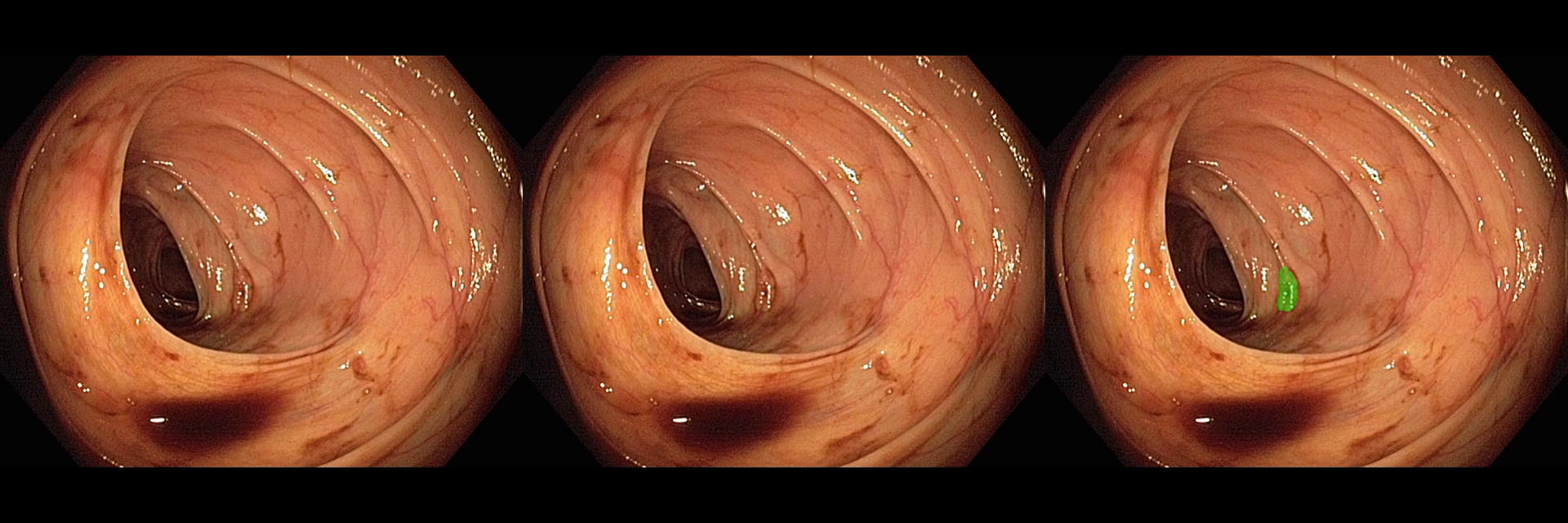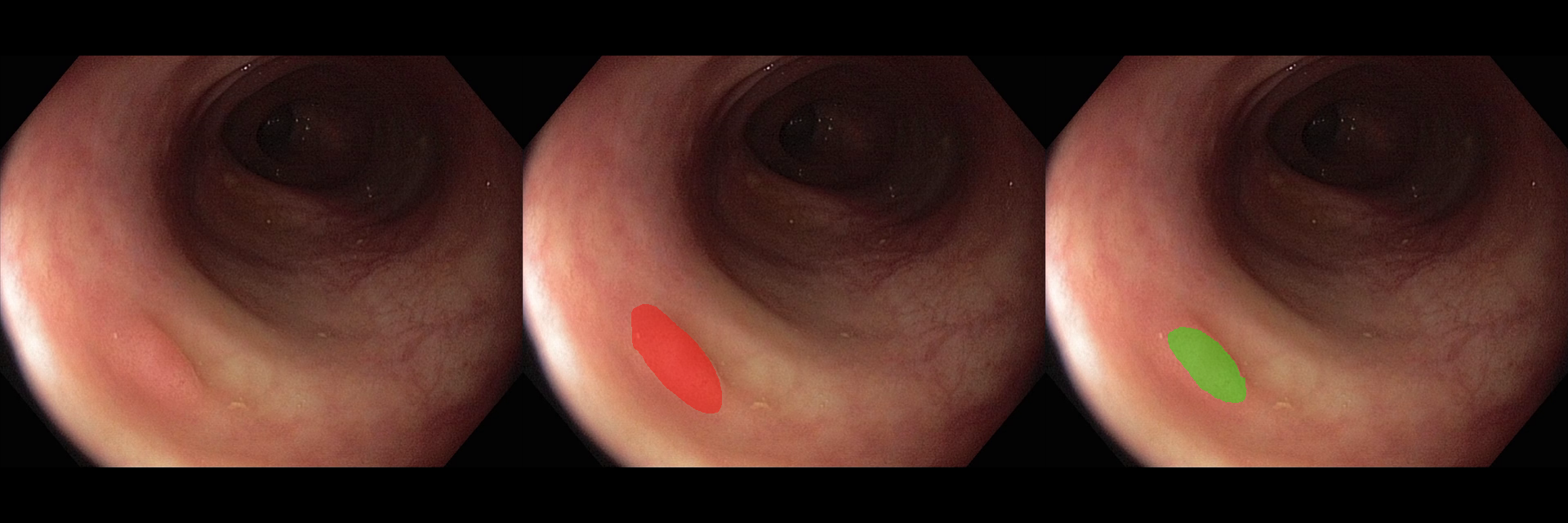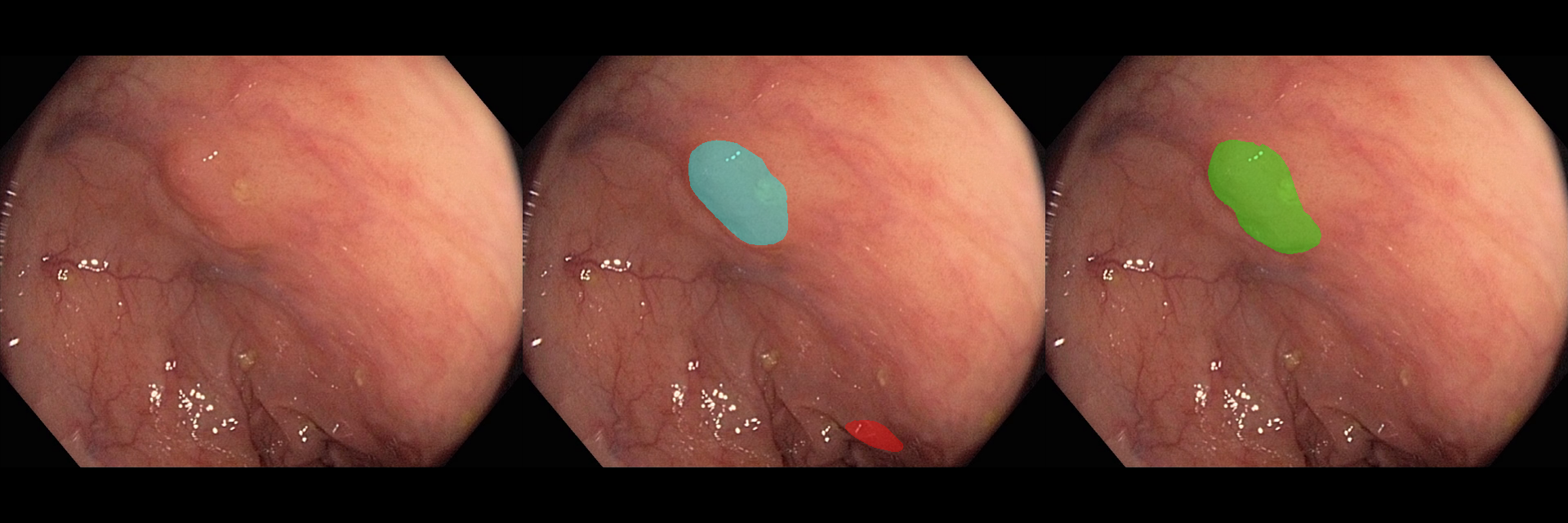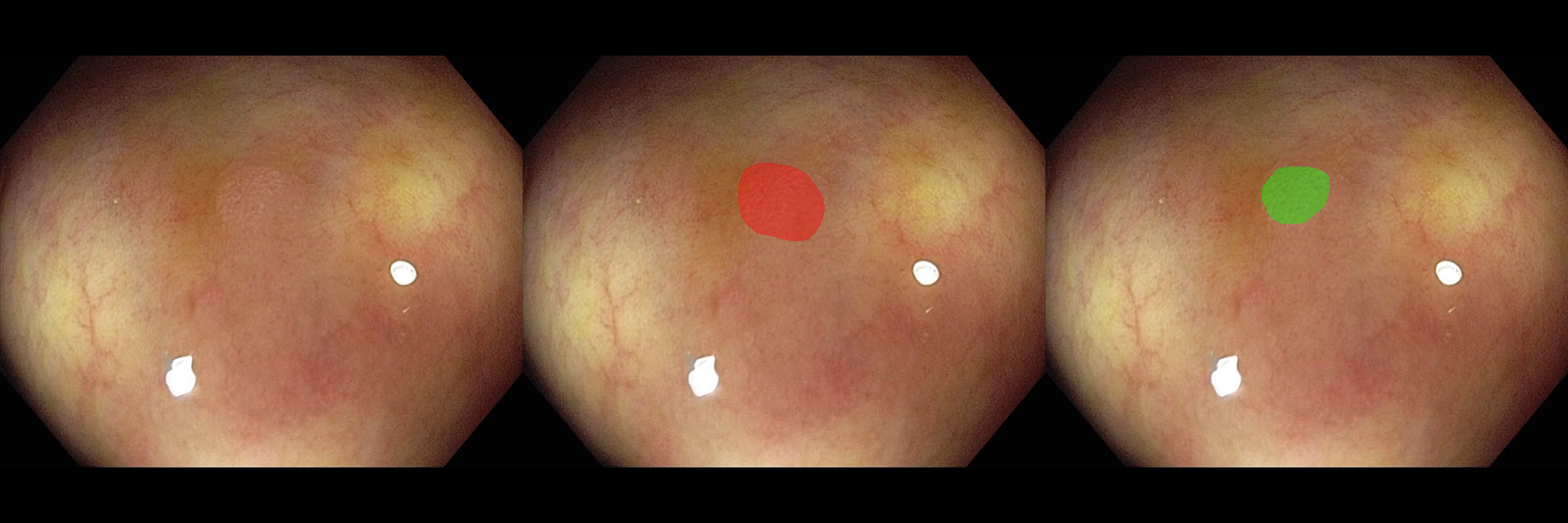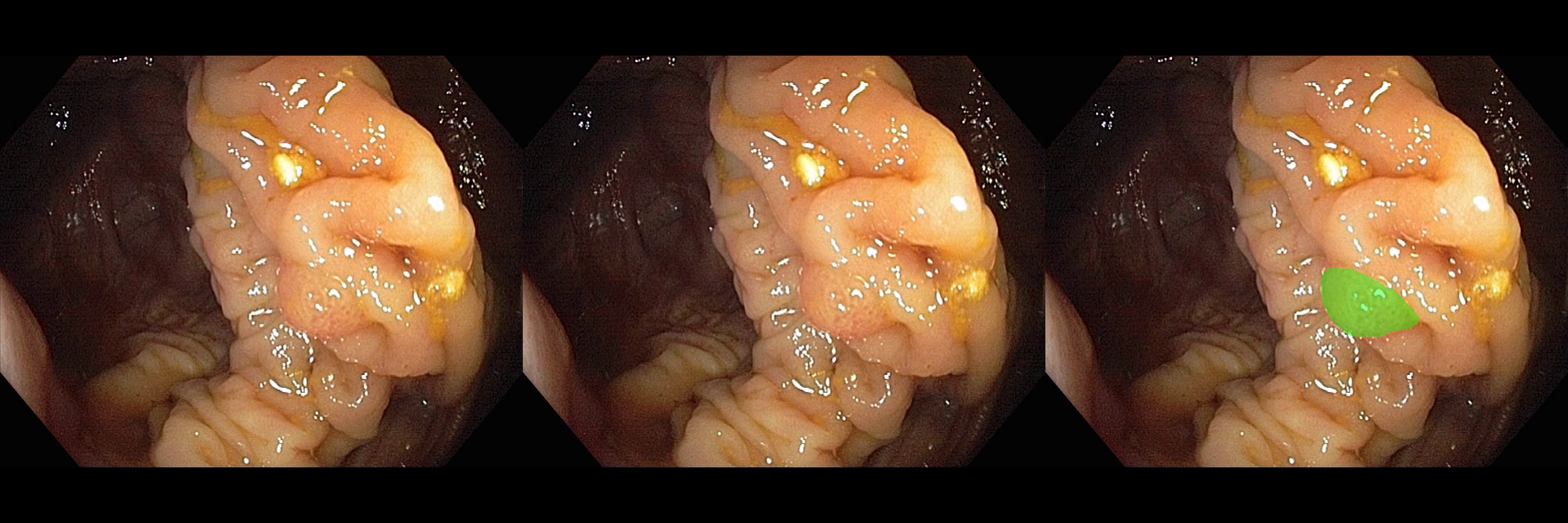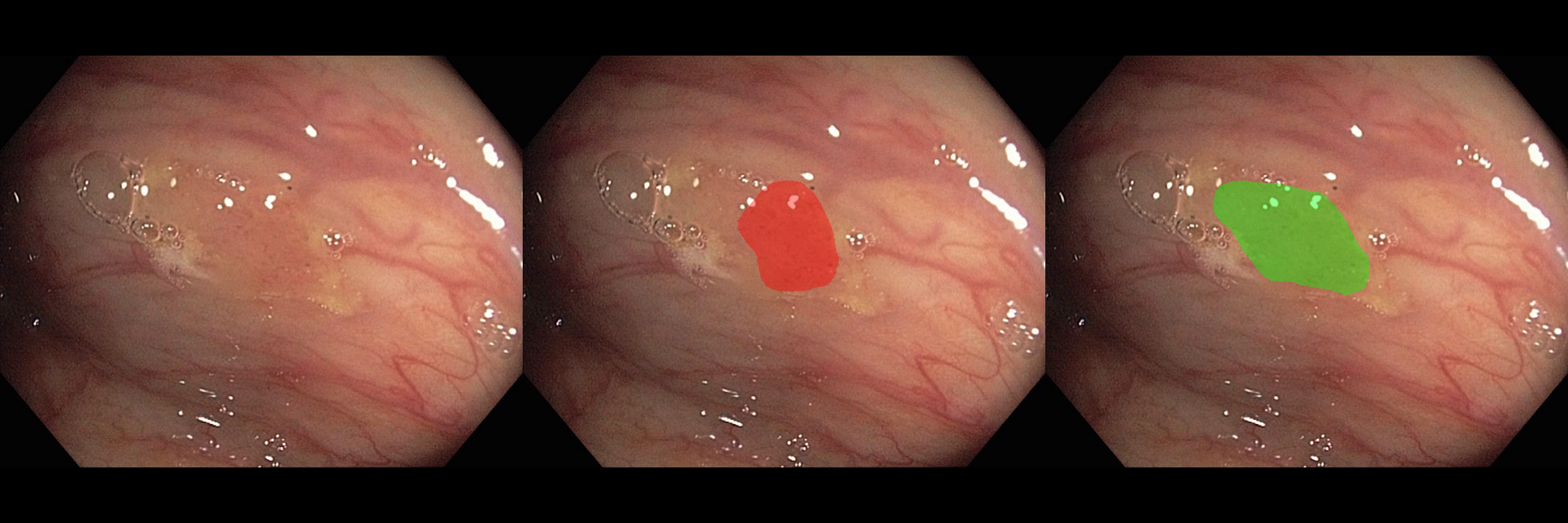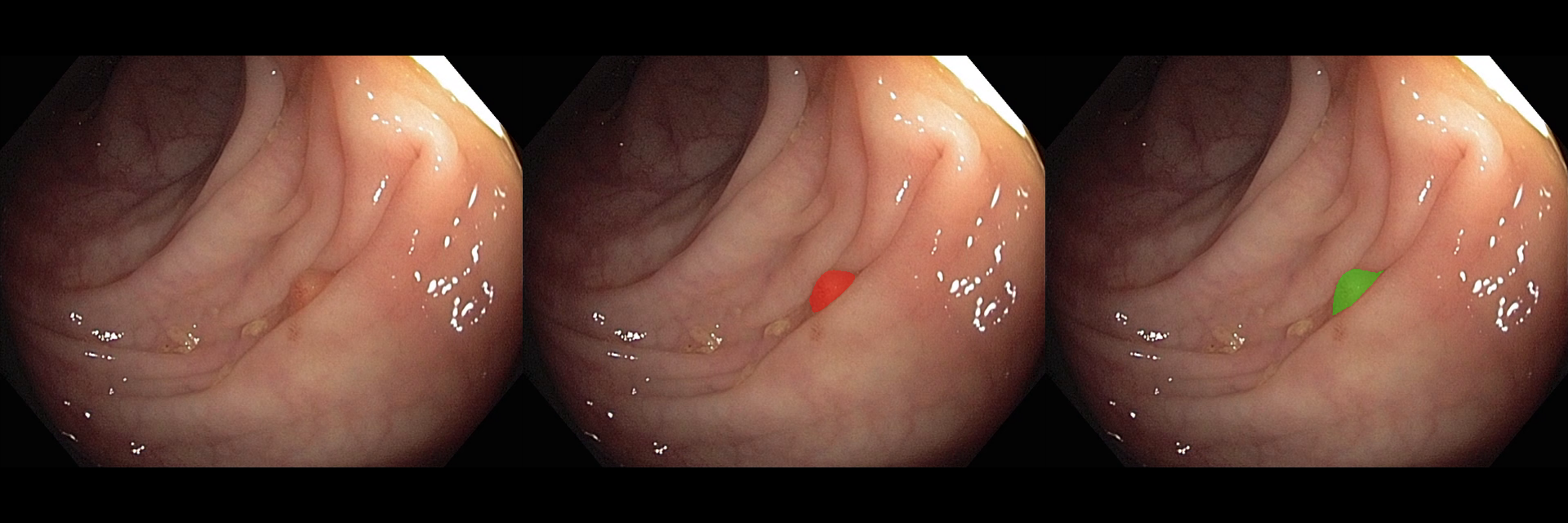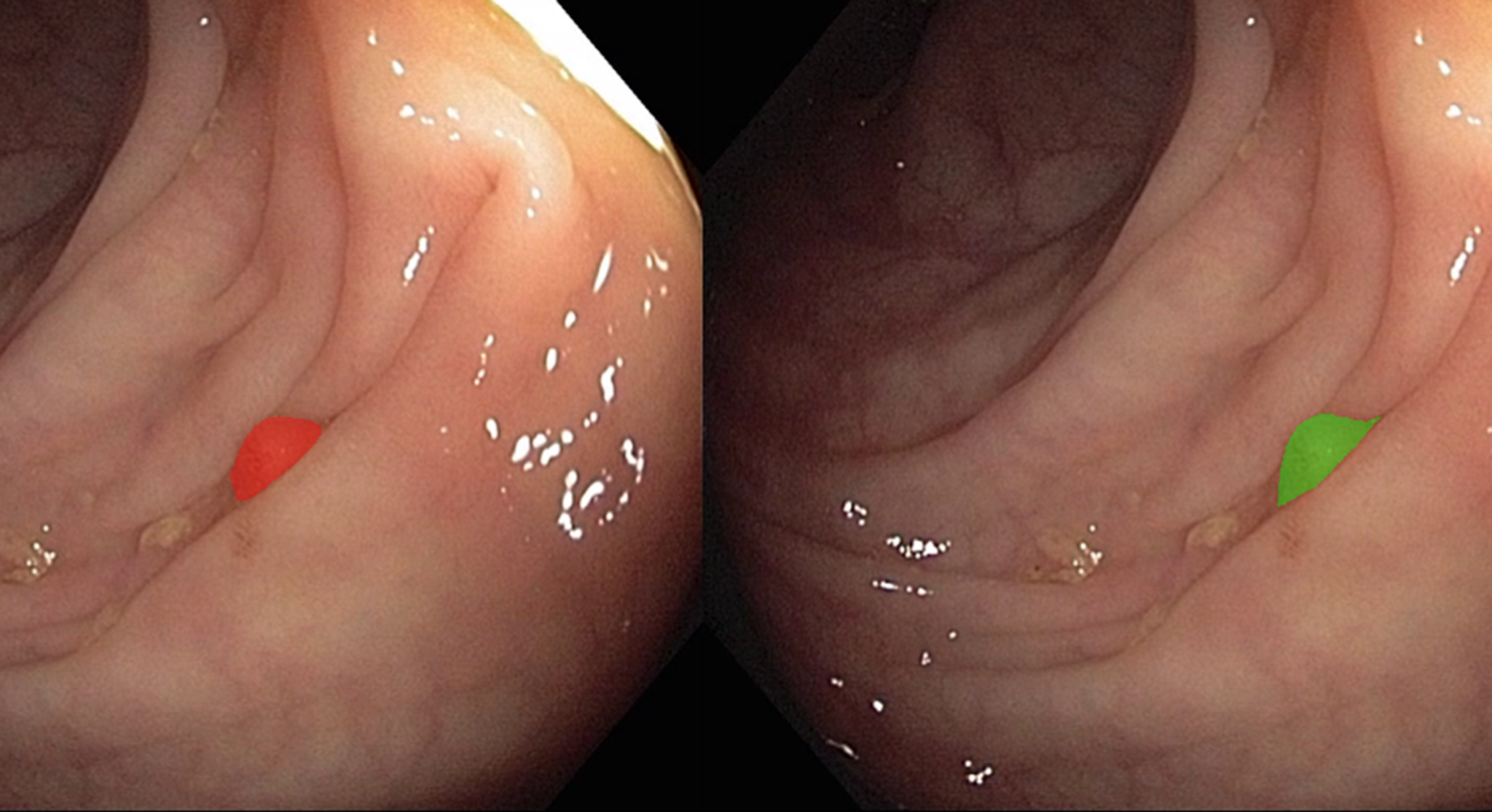
- Colorectal cancer is the second most common cause of death from cancer for men and women alike.
- In most cases, colonic polyps are symptomatic of the early stages of colorectal cancer.
- Regular screening helps detect polyps at an early stage and thus prevent this type of cancer from developing.
Problem
Such polyps, however, are often missed during colonoscopies. Small polyps and flat new polyp formations that are deeply embedded are especially difficult to detect. And the physician’s experience and level of attention can also influence the detection rate.
Solution
Automatically detect and highlight polyps in the endoscope’s live video signal.
